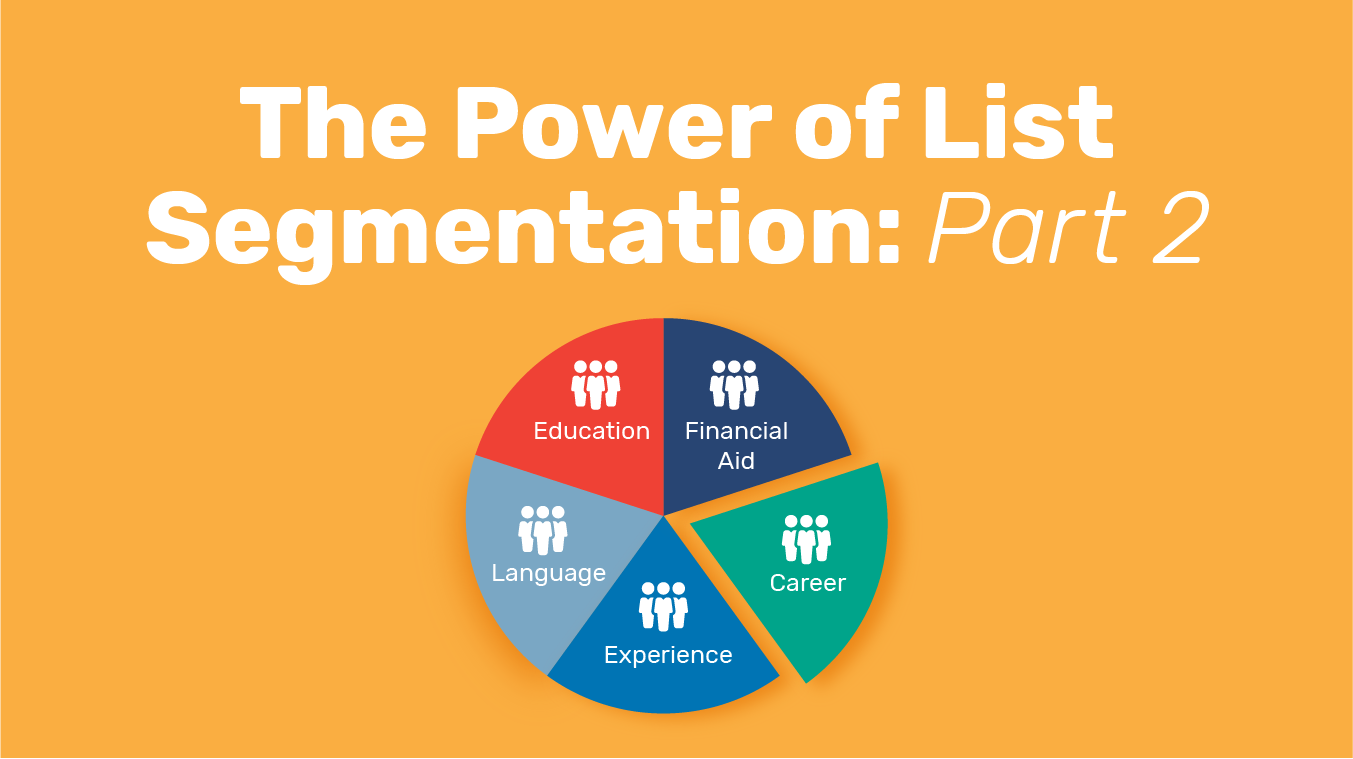Last week’s blog post kicked off our mini-series on audience segmentation with a discussion on segmentation by demographics, geography and interests. This week we will delve into models for identifying underlying student motivations and how to make use of this data for your international student recruiting.
Psychographic segmentation identifies unique groups of students with shared motivations and desires in order to help you, as a recruiter, discover what drives them to enroll at your institution. Student's don't just show up on your doorstep. They must be motivated to seek out your institution, out of all your competition.
Here's an interesting audience segment: 50% of Nafsan's think that Artificial Intelligence (AI) will change Higher Education but they don't know how. We aim to fix that! Intead Plus Members will have access to an exclusive webinar about AI and Higher Ed on Thursday, March 28, 2019 at 1 pm. Not an Intead Plus Member and still want in? We might know some people at the door! Drop us an email.
The market segments we discuss below are common to most student groups no matter their geographic origins. Yet, each segment will respond more or less to different influencers, based on what part of the globe they come from.
There are so many ways to parse the data. No wonder so few institutions take the time to implement this granular approach to marketing. You know other industries, including clothing retailers, are doing this stuff with their digital marketing. it's not that hard to do. But it takes time.
Retailers use CRM platforms and employ small teams of people to write copy and develop marketing approaches for each clothing line based on audience segmentation. They commit the resources to meet each audience segment with the right information, at the right time, to help them make an informed decision about a purchase. Although the service your institution provides differs wildly from the offerings of any retailer, the granular level of segmentation is relevant and applicable to your specific academic programs and the audience segments you are approaching for each one.
Bottom Line: We certainly see parallels with how retailers and universities can communicate their offerings to audience segments and cross sell (students interested in this program also pursued interests in these areas...). What we don’t see is a parallel commitment of resources. Academics are so often strained by budgets and limited resources, but the reality is that those committed to growth and success commit funds to reaching the right audience with the right information.
Read More

